Crampons
A look at Petzl's climbing and mountaineering crampons.
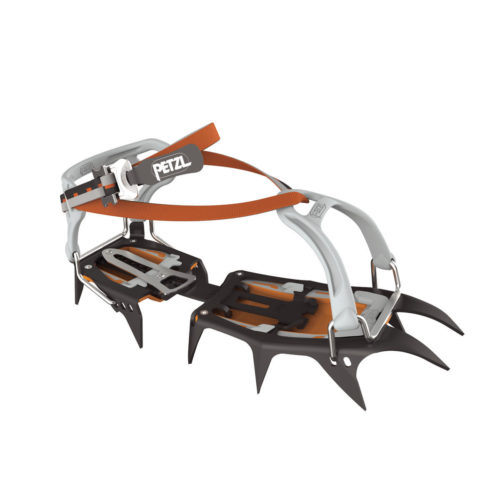
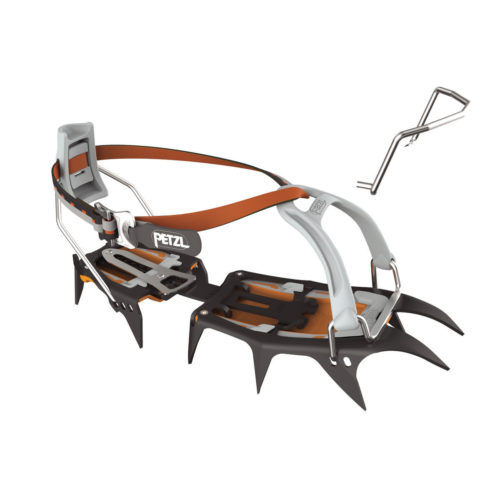
Vasak Universal
The Vasak is a 12-point general mountaineering crampon designed for introductory and classic alpine mountaineering terrain when most travel is on glaciers, classic snow and ice faces and mixed rocky ridges.
Petzl have designed two ways of fixing the crampons onto the heel of your boots.
The first is the Flexlock heel fixing system, which fixes onto all types of mountain boots from flexible B1 to more rigid B3 boots.
The second is the Leverlock system, which requires a heel welt moulded onto the sole unit of your boot, allowing the locking system to lever onto it and fix securely. These boots are typically the stiffer B2 and B3 boots.
At the front point end of the crampon, Petzl have also designed two ways of securely fixing the crampon to the toe of your boots.
The first is a rubber moulded flexible bail that fits over the toe of your boot. This is designed for B1 and B2 boots that don’t have a toe welt moulded onto the sole of the boot. It also works well on boots that have a moulded toe welt, but which, over the years, has worn down through walking and isn’t now big enough to secure the second system!
The second system is a metal toe bail that fixes onto the moulded welt that you’ll find on some B2 and all B3 boots.
General alpine mountaineering crampons seem to last much longer than boots these days and with this in mind many people favour the rubber moulded flexible bail fixing for the toe of their boot and for speed and efficiency they use the Leverlock system to secure the heel of the boot as many people will use B2 boots in the summer.
These days, all crampons come with integrated anti-ball plates and Petzl have designed the ANTISNOW system to stop any wet snow from balling up underneath the crampon.
On the Vasak there are two FLAT front points designed for snow, ice and rock climbing on more classic and glacial terrain, perfect for our introductory and classic alpine mountaineering courses.
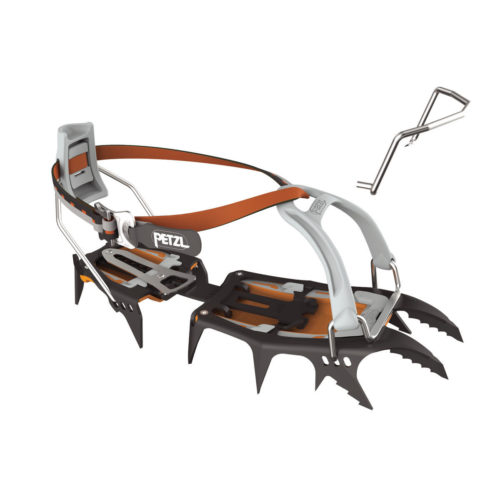
Sarken
The Sarken leaves behind more flexible B1 boots and is designed for the stiffer B2 and B3 boots.
The crampon only comes with the Leverlock system, but again has two front bail options, both the moulded flexible bail and the metal toe bail, which fit directly to the moulded welt on the front sole of the boot.
A key feature on the Sarken is the front points, which are designed for both classic mountaineering and steeper mixed snow and ice climbing.
Looking at a cross section of the front points, Petzl have designed each point as a ‘T’ shape, combining both the classic flat front points with vertical serrated teeth underneath.
The thought behind this is trying to design a front point that works well on classic mountaineering terrain but also gives you a good level of security on steeper terrain such as hard icy sections on a summer classic. This vertical serrated underside to the classic flat front points gives you a secure purchase on hard ice and stops the front points ‘skating around’ which is would you tend to find if using the classic flat front points on hard ice.
What also helps with increased security is that the second set of teeth back from the front points are also serrated and hence are more aggressive, giving greater security on steeper snow or ice. Personally, I feel that even for someone just starting out, but who wants to progress onto more technical terrain, coupled with the fact the summer seasons of late have been drier and more icy, these crampons are great for most of your mountaineering activities.
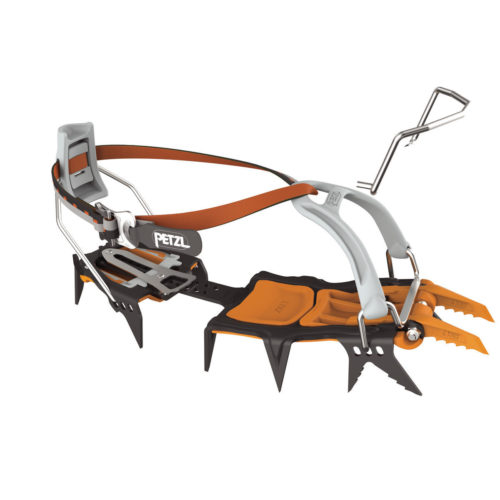
Lynx
The Lynx is focused on climbing steeper terrain, as it comes with completely vertical front points that will penetrate steep hard ice and the serrated underside gives the climber maximum security.
The two front points can be adjusted so that only one front point needs to be used as some climbers like to climb with a ‘mono’ point when dry tooling, winter mixed climbing and climbing steep ice.
The advantage over the lighter and more focused Petzl Dart and Dartwin crampons is that the Lynx also comes with anti-ball plates and the two different front toe bail fittings as with the Sarken and Vasak models. This really helps, as if you are climbing steep winter alpine routes in higher altitude double boots you might want to fit the moulded front bails or maybe just icefall climbing in the valley, the metal toe bail on a 3 to 4 season boots works best.
Fitted anti-ball plates are so important when much of the time is spend accessing the steeper ice and mixed climbs and descending from a route when moving over alpine mountaineering terrain, glaciers or in Scotland getting on and off climbs.
Again as with the Sarken, the Lynx only comes with the Leverlock heel fitting system so can only be used on stiffer B2 and B3 boots
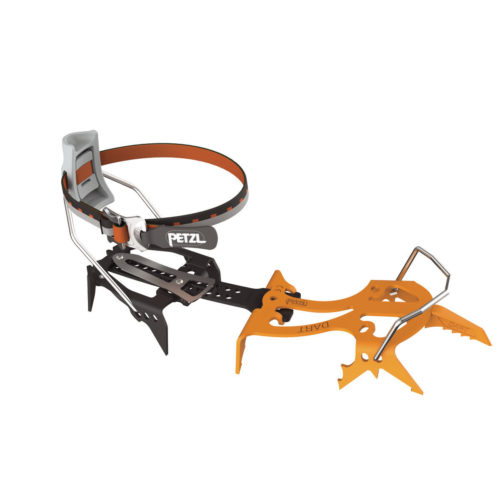
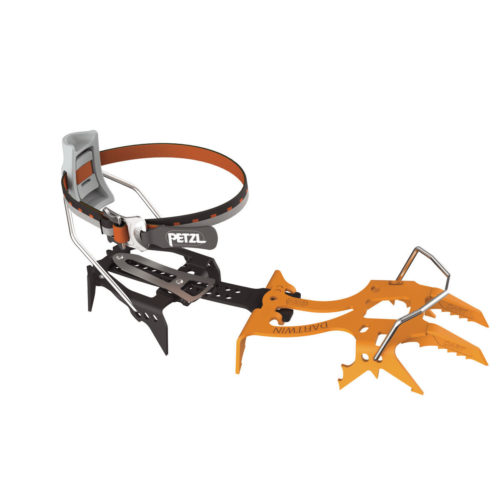
Dartwin/Dart
The Dart and Dartwin crampons are purely focused on climbing steep routes whether icefall climbing, dry tooling or mixed climbing. They are super light and give great feedback to the climber. They come standard with the Leverlock system and metal toe bails to help keep weight down.
A disadvantage is that they don’t come with anti-ball plates as weight saving is a key feature, but if used on the right routes they’re fantastic.
The single ‘mono’ point Dart is great for mixed climbing and dry tooling as the ‘mono’ can be placed into tiny cracks, the foot then twisted to lock the front point in place creating a very secure foot placement. It also works very well in small hollows where it may be difficult to maximise a small hollow if using crampons with two front points.
The Dartwin is my choice for valley-based icefall climbing when I am not moving around in a high mountain environment and so getting to icefalls feels safe enough without needing anti-ball plates. The two vertical front points penetrate the ice like a knife through butter, and feel really stable and secure underfoot. They fit my Arc’teryx Acrux AR boots perfectly and being light give me great feedback from the ice I’m climbing.
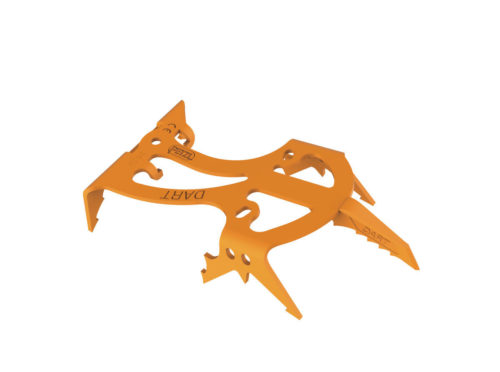
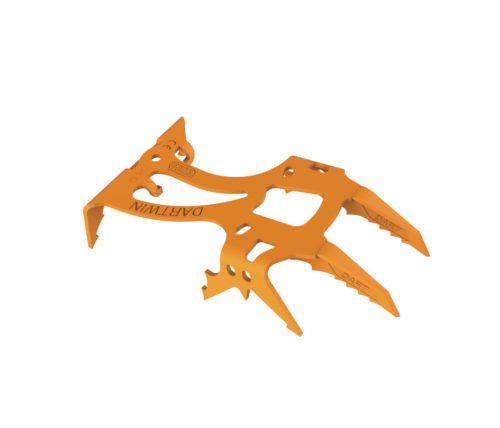
Note
Petzl do offer a wide range of aftermarket extras so that you could pick and mix a little keeping costs down.
All the Leverlock and heel pieces are the same, connecting to the front piece with the same bars throughout all the range. With this in mind, you could buy a set of Sarken crampons and then buy the Dartwin or Dart front crampon piece and modulate between the two front pieces depending on what terrain you’re climbing at the time.
I hope that helps
Adrian Nelhams
Related News Articles

Getting Into & Developing Your Climbing
Indoor bouldering is a great place to start if you want to try climbing for the first time. You can…
Read Article
Petzl 'Alpen Adapt' Crampons
A quick look at the Petzl crampons that I'm using at the moment, and how you can very easily mix…
Read Article
Petzl Crampon Compatability
Mix & match the different Petzl crampon sections, to create the best fit for your boots, and adapt to each adventure.
Read ArticlePrussiking Up A Rope
Following the recent articles around crevasse rescue and snow belays, I wanted to finish up by outlining a standard technique…
Read Article



